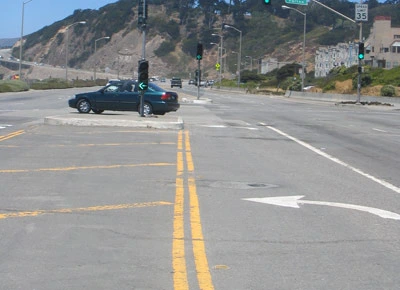Driving in u-turn is a complex and dynamic activity that requires thorough knowledge of traffic rules and regulations.
One action that needs careful consideration is the backflip. Often needed for navigation or redirection, this feature has its own rules and challenges.
In this study, we delve into the intricacies of performing a U-turn, examine its legal framework, potential dangers and the importance of mastering this maneuver.
Intricacies of performing a U-turn
Legal Aspects: Understanding the Rules
The first aspect to consider when considering a heel turn is the legal framework governing the move. Different jurisdictions may have different rules, but the common factors generally relate to ensuring safety and minimizing disruption to traffic flow. In many areas, U-turns are prohibited at certain locations or intersections. Drivers must be aware of local traffic laws and signs to successfully navigate these regulations.
Intersection Navigation: Challenges and Considerations
U-turns at intersections can be particularly difficult. The driver must be aware of traffic approaching from all directions, pedestrians and potential blind spots. Navigating complex intersections requires a thorough understanding of traffic patterns, right-of-way rules and proper guidance. Ignoring these principles can lead to accidents and traffic violations.
Mastering the Three-Point Turn: Reversal Techniques
One of the basic techniques associated with the reverse is the three-point turn, which is often necessary in tight or congested spaces. This procedure involves a series of careful maneuvers, including reversing, steering and driving forward, to complete a successful U-turn. Mastering the three-point turn is essential for a driver, as it not only helps with navigation but also improves overall driving skills.

Hazards and Defensive Driving: Risk Reduction
U-turns, if not done correctly, can pose a significant risk to both the driver and other road users. Hazards can be unexpectedly approaching traffic, misjudgment of available space or unexpected obstacles. Defensive driving skills become crucial to reducing these risks. Anticipating potential challenges, maintaining a safe following distance and preparing to take the lead are important components of defensive driving during a U-turn.
Technical advances: Assistance systems
Today, technology plays a key role in improving driving safety. Advanced Driver Assistance Systems (ADAS) can help with U-turns by providing real-time information about surrounding traffic, blind spots and potential obstacles. These systems help reduce error rates and make U-turns safer and more efficient.
Pedestrians to consider: sharing the road
U-turns are not limited to interactions with other vehicles; pedestrians also play a crucial role in the equation. Drivers must be extra careful when pedestrians are present, especially at crosswalks and intersections. Respecting the right of way for pedestrians and using the appropriate signs is an important part of responsible driving when turning.
Training Initiatives: Improve Managerial Knowledge
Due to the complexity of U-turns, training initiatives have become a priority. Driver education programs should include comprehensive training on proper U-turns, emphasizing legal requirements, techniques and defensive driving strategies. Informed drivers are better equipped to navigate the roads safely and responsibly.
Conclusion: U-turns as a Skill
In summary, a U-turn is a versatile driving maneuver that requires a combination of legal knowledge, technical skills and situational awareness. Successful performance requires drivers to understand local traffic laws, master techniques such as three-point turns, and embrace the principles of defensive driving. As technology advances, driver assistance systems make U-turns safer. Finally, integrating U-turn skills into driver training programs ensures that drivers are well equipped to handle difficult road conditions, contributing to the safety of all road users.
U-turns demand a heightened sense of spatial awareness. Drivers must possess an acute understanding of their vehicle’s dimensions, considering factors such as turning radius and the space required to complete the maneuver safely. This skill becomes particularly vital in situations where the available space is limited, such as narrow streets or congested urban areas. Spatial awareness is not only about the vehicle’s physical dimensions but also extends to an awareness of the surrounding environment.
